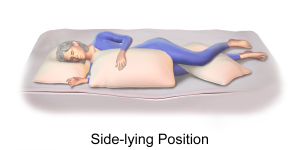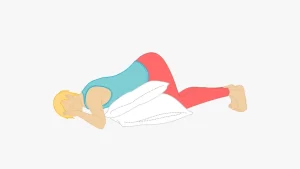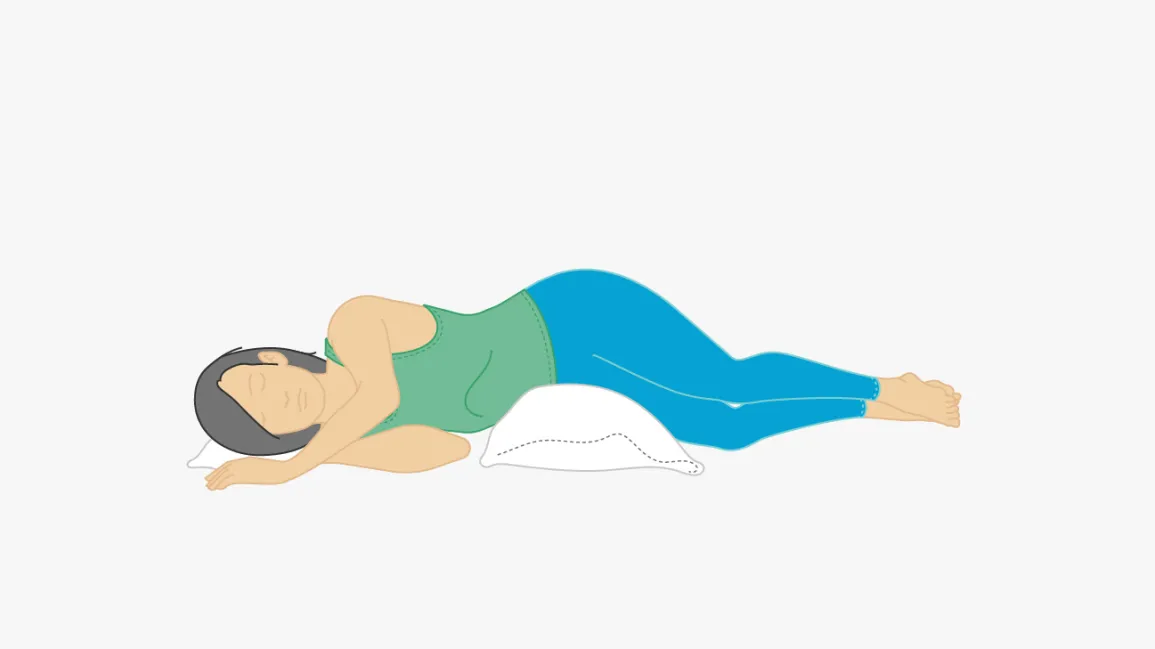Bronchiectasis, a chronic condition that involves damage to the airways, can significantly impact breathing and overall quality of life. Proper rest is essential for managing symptoms and promoting lung health, and the way you sleep plays a crucial role in achieving this. The best sleeping positions for bronchiectasis, how they help, and tips to improve your rest.
What is Bronchiectasis?
Bronchiectasis is a chronic lung condition characterized by permanent damage, thickening, and widening of the airways (bronchi). This damage results in an inability of the lungs to effectively clear mucus, which can lead to frequent infections, inflammation, and further damage to the lungs.
Related Articles: Bronchiectasis Symptoms, Causes, Prognosis, and Treatment
Key Features of Bronchiectasis:
- Airway Widening and Damage: The airways lose their elasticity and become scarred and widened.
- Mucus Accumulation: Excess mucus builds up, creating an environment for bacteria to grow, increasing the risk of repeated lung infections.
- Chronic Infections and Inflammation: Ongoing infections can worsen the condition over time.
Common Symptoms:
- Persistent cough (often producing thick, discolored mucus)
- Shortness of breath
- Wheezing
- Chest pain
- Frequent respiratory infections
- Fatigue
Causes:
Bronchiectasis can develop due to various factors, including:
- Infections: Severe respiratory infections like tuberculosis, pneumonia, or whooping cough.
- Underlying Conditions: Diseases such as cystic fibrosis, primary ciliary dyskinesia, or immune system deficiencies.
- Obstructions: Blockages in the airways caused by tumors or inhaled objects.
- Autoimmune Disorders: Conditions like rheumatoid arthritis or inflammatory bowel disease.
Why Does Sleeping Position Matter in Bronchiectasis?
Bronchiectasis often causes symptoms like persistent coughing, excess mucus production, and difficulty breathing. Sleeping positions that promote optimal lung drainage, reduce mucus buildup, and ease breathing can help minimize nighttime discomfort and improve sleep quality.
Related Articles: Treatment of Bronchiectasis by Natural Herbal Remedies
Best Sleeping Positions for Bronchiectasis
1. Propped-Up Position (Elevated Upper Body)
- How It Helps: Elevating the upper body using pillows or an adjustable bed reduces pressure on the lungs, eases breathing, and prevents mucus from pooling in the airways.
- Tips: Use a wedge pillow or multiple regular pillows to achieve a slight incline. Aim for an elevation of around 30-45 degrees.

2. Side-Lying Position with the Affected Lung Up
- How It Helps: If one lung is more affected, lying on the opposite side can help improve ventilation to the healthier lung, allowing better oxygen exchange.
- Tips: Place a supportive pillow between your knees for comfort and use a head pillow to keep your neck aligned.

3. Prone Position (Stomach Sleeping)
- How It Helps: For some individuals, sleeping on the stomach can promote better airflow by preventing the weight of the body from compressing the lungs.
- Tips: Use a thin pillow or no pillow under your head to avoid neck strain and ensure a flat sleeping surface.

4. Postural Drainage Positions
- How It Helps: These specialized positions, used for clearing mucus, involve lying at angles that encourage mucus to drain from the lungs. Though not always comfortable for sleeping, incorporating these positions during naps or rest periods can reduce nighttime coughing.
- Tips: Consult a respiratory therapist for guidance on the safest and most effective angles.

Positions to Avoid
Certain positions may exacerbate symptoms and should be avoided:
Related Articles: 9 Natural Treatment for Bronchiectasis
- Flat on Your Back: This position can cause mucus to accumulate in the airways and lead to increased coughing or breathing difficulty.
- Lying on the Side of the Affected Lung: This can worsen symptoms by restricting airflow to the healthier lung.
Additional Tips for Better Sleep with Bronchiectasis
- Use a Humidifier: Adding moisture to the air can help loosen mucus and soothe the airways, making breathing easier.
- Stay Hydrated: Drinking plenty of fluids helps thin mucus, making it easier to expel.
- Practice Breathing Exercises: Techniques like diaphragmatic breathing before bedtime can reduce stress and promote relaxation.
- Take Prescribed Medications: Ensure you take any bronchodilators or mucus-thinning medications as prescribed to alleviate symptoms.
- Keep Your Sleep Environment Allergy-Free: Use hypoallergenic bedding and keep your room free from dust and irritants.
When to Seek Professional Advice
If you experience severe nighttime symptoms such as difficulty breathing, persistent coughing, or disrupted sleep, consult your doctor. A healthcare provider can recommend therapies like chest physiotherapy or prescribe medications to help manage bronchiectasis more effectively.
Conclusion
Finding the best sleeping position for bronchiectasis can significantly improve your sleep quality and overall well-being. Experiment with the recommended positions to determine which works best for your specific symptoms. Combined with a supportive sleep environment and proper medical care, these strategies can help you rest easier and breathe better every night.




